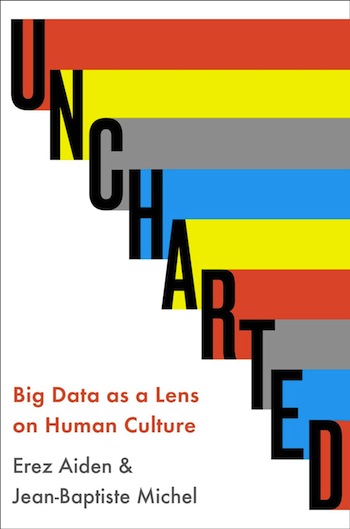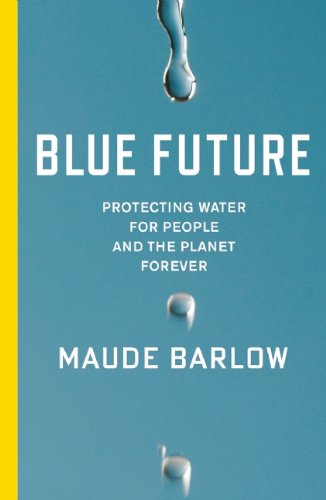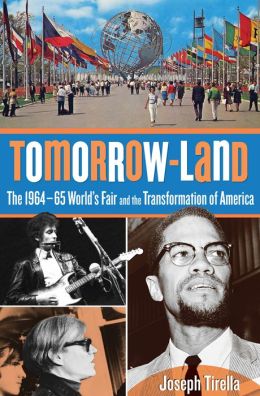-

Uncharted: Big Data as a Lens on Human Culture
by Erez Aiden and Jean-Baptiste Michel

The Nutshell:
Scientists Aiden and Michel invented the Google Ngram Viewer, which allows users to analyze the evolution of language as captured in the millions of books Google has digitized. In Uncharted, they tell the story of how they developed this tool, explain some of their most trenchant findings, and demonstrate the potential of this data to illuminate the world we’ve created.
Literary Lovechild Of:
Raymond Williams’ Keywords: A Vocabulary of Culture and Society and Nate Silver’s The Signal and the Noise: Why So Many Predictions Fail—but Some Don’t.
You'll Find It On Your Bookshelf If:
When Edward Snowden’s leaks were first made public, your first reaction was to come up with 17 awesome ways to use all that NSA data.
Cocktail Party Fodder:
As measured by the Ngram Viewer’s calculation of the number of times a name is mentioned in books, the most famous person born in 1936 is neither Robert Redford nor former Czech leader Václav Havel. It’s Carol Gilligan, a New York University psychologist.
For Optimal Benefit:
Graph your favorite dirty words with the Ngram Viewer. Then present your findings to your peers, who have done exactly the same thing.
Snap Judgment:
Aiden and Michel have made fascinating discoveries about everything from the speed of fame to Soviet censorship. That they’re only just skimming the surface is hugely exciting.
-

Blue Future: Protecting Water for People and the Planet Forever
by Maude Barlow

The Nutshell:
Everything about our contemporary world—from global politics to food production technology—has made our water supply unsustainable, argues Canadian activist Barlow. She calls for clean water to be recognized as a human right and a public resource.
Literary Lovechild Of:
Steven Solomon’s Water: The Epic Struggle for Wealth, Power, and Civilization and Al Gore’s An Inconvenient Truth: The Planetary Emergency of Global Warming and What We Can Do About It.
You'll Find It On Your Bookshelf If:
For Christmas this year, all you wanted was a spring-fed pond.
Cocktail Party Fodder:
A 2012 study by University of Twente researchers in the Netherlands found—based on estimates of the water used to produce the food we eat, the clothing we wear, and the products we use—that the average global citizen uses 4,000 liters of water per day. That’s 10 to 12 times higher than previous approximations.
For Optimal Benefit:
Do not read this book by a pool, particularly if that pool is in Las Vegas or Dubai.
Snap Judgment:
Barlow’s got a crusade, and she can be a bit of an alarmist, but once you read the facts she’s compiled it’s hard to disagree with most of her conclusions.
-

Tomorrow-Land: The 1964-65 World’s Fair and the Transformation of America
by Joseph Tirella

The Nutshell:
Urban planner and master builder Robert Moses wanted the 1964-65 World’s Fair, which took place in Flushing, New York, to showcase the future. Instead, according to writer and editor Tirella, it portrayed a messy present, where art and civil rights, music and international relations, technology and architecture were undergoing a massive overhaul.
Literary Lovechild Of:
Robert A. Caro’s The Power Broker: Robert Moses and the Fall of New York and Erik Larson’s The Devil in the White City: Murder, Magic, and Madness at the Fair that Changed America.
You'll Find It On Your Bookshelf If:
“It’s a Small World”—designed originally for the fair’s Pepsi-Cola Pavilion—remains your favorite Disney ride (and song).
Cocktail Party Fodder:
The Ford Mustang was first introduced at the fair, which also gave visitors their first glimpse of Manhattan’s not-yet-built Twin Towers, displayed in miniature.
For Optimal Benefit:
Take an excursion to Queens to check out the iconic, decaying New York State Pavilion—with its mid-century-modern, spaceship-like towers—which was designed by architect Philip Johnson. Or stay in Manhattan and take a YouTube tour.
Snap Judgment:
Tirella uses the fair to relate a cultural history of the early- to mid-1960s that’s mostly familiar—but he does succeed in capturing an exciting time from many different angles.



